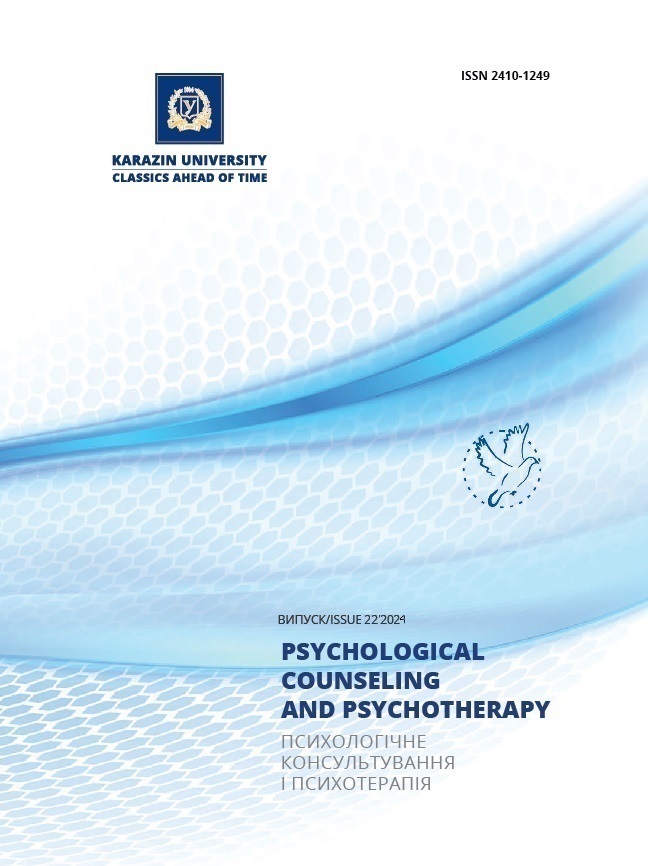Vaginismus and Dyspareunia. A Case Report From Clinical Practice
Abstract
The article deals with the following clinical case. Female patient Z., 27 years old, not married, currently has no sexual partner. For 2 years she has had muscle contractions that prevent the penis from entering the vagina, accompanied by contractions of the thigh muscles. There is also pain when trying to penetrate the penis into the vagina. These phenomena are connected with a fear of their occurrence during sexual intercourse. The examination allowed us to assume that in this case we are talking about psychogenic vaginismus and psychogenic dyspareunia (in ICD-10 codes F52.5 and F52.6 – vaginismus and dyspareunia of non-organic origin). In ICD-11, this disorder is represented by the code HA20 (Sexual pain-penetration disorder). This diagnosis is common to these pathologies. The following correction was carried out: (1) measures to help the female patient understand her problem and its origin; (2) cognitive techniques to mitigate the perception of one’s disorder, in particular, the “matching by contrast” technique proposed by us; (3) hypnosuggestive therapy (programming and modeling) [13 sessions]; (4) the “swing” technique modified by us from the arsenal of neurolinguistic programming [one session conducted]; (5) sex therapy (sexual behavioral training) – insertion of vibrators into the vagina with increasing depth of immersion; (6) pharmacotherapy: tranquilizer gidazepam and muscle relaxant sirdalud 1-1.5 hours before attempting sexual intercourse or inserting a vibrator. The given therapy led to the complete elimination of vaginismus, which made it possible to perform vaginal sexual intercourse, and a significant reduction in the severity of dyspareunia. The female patient notes that the pain during insertion of the penis into the vagina has significantly decreased. There is no discomfort during friction. She can also now have sex in different positions. Previously, this was impossible because the penetration of the penis into the vagina was accompanied by greater pain in some of them. In addition, she notes that now it takes much less time to insert the penis into the vagina (but not because of the absence of muscle spasm, which she has already gotten rid of), but because of the reduced fear of pain during penetration.
Downloads
References
Andreas, K.; Andreas, S. (1994). Change your thinking and benefit from the results. The latest submodality interventions of NLP. St. Petersburg: Juventa. 240 p.
Bandler, R. (1994). Use your brain for change. Neuro-linguistic programming. (Edited by K. Andreas and S. Andreas). St. Petersburg: Juventa. 168 p.
Diagnostic and Statistical Manual of Mental Disorders. Fifth Edition. (2013). United States: American Psychiatric Association.
ICD-11 for Mortality and Morbidity Statistics. 2024-01. https://icd.who.int/browse/2024-01/mms/en#1189253773
Kocharyan, G. S. (1987). Methods of rational psychotherapy in sexological practice. Social-psychological and medical aspects of marriage and family: Abstract of the report of the 3rd regional scientific-practical conference of sexopathologists. Kharkov, 422–423.
Kocharyan, G. S. (2009). NLP: therapeutic techniques. 2nd edition., revised and enlarged. M.: Eksmo. 176 p.
Kocharyan, G. S. (2019). A rare clinical case of failure expectation syndrome (fear of sexual failure). Health of man, Issue 1(68), 60–63.
Kocharyan, G. S. (2020). Vaginismus: frequency, definitions, diagnostic criteria, formation. Health of Man, Issue 4(75), 22–31.
Kocharyan, G. S. (2021). Sexual disorders and anatomical problems that prevent sexual intercourse. Kharkov: DISA PLUS Ltd. 250 p.
Kocharyan, G. S. (2020). Dyspareunia as a clinical problem. Health of Man, Issue 3(74), 65–74.
Marshania, Z. (2017). Certain sociocultural aspects of prevalence and treatment of vaginismus in Georgia. Health of Man, 1(60), 71–73.
Mitchell, K. R.; Geary, R.; Graham, C. A.; Datta, J.; Wellings, K.; Sonnenberg, P.; Field, N.; Nunns, D.; Bancroft, J.; Jones, K. G.; Johnson, A. M.; Mercer C. H. (2017). Painful sex (dyspareunia) in women: prevalence and associated factors in a British population probability survey. BJOG,124(11), 1689–1697. https://doi.org/10.1111/1471-0528.14518
O’Sullivan, K. (1979). Observation on vaginismus in Irish women. Arch Gen Psychiatry, 36 (7), 824–826. https://doi.org/10.1001/archpsyc.1979.01780070102012
Seehusen, Dean A.; Baird, Drew C.; Darnall, Carl R.; Bode, David V. (2014). Dyspareunia in Women. Am Fam Physician, 90(7), 465–470.
The ICD-10 classification of mental and behavioural disorders: clinical descriptions and diagnostic guidelines. (1992). Geneva: World Health Organization.
Tugrul, C.; Kabakci, E. (1997). Vaginismus and its correlates. J Sex Marital Ther., 12(1), 23–24.
Vaginismus. https://en.wikipedia.org/wiki/Vaginismus Assessed 09/26/2020.








